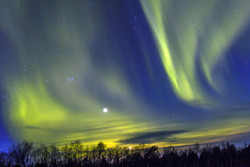Plasma kinetics in space
When a gas is incredibly hot, some or all of its atoms are split into electrons and positively charged ions that can move around independently of one another. This ionised gas is called plasma, the fourth phase of matter in addition to solid, liquid and gas. It is an interesting mix of charged and uncharged particles, and electrical and magnetic fields. The Earth's magnetosphere and the particles accelerated in it play an important role in space storms and space weather in general. These, in turn, can have effects on orbiting satellites and their function. The EU-funded project 'Dissipative structures and kinetic processes in the near Earth plasmas' (GEOPLASMAS) was initiated as an exchange programme by a consortium of five research institutions. Scientists set out to study heating, transport, acceleration and interaction processes in near-Earth plasmas. Research led to many new discoveries that will be important for science policymakers given the impact on space weather and space weather forecasts. In addition, insight into near-Earth plasma from space exploration can be an invaluable tool to draw inferences about other plasma that can only be studied remotely. Prolific and stimulating collaboration led to more than 235 publications in peer-reviewed scientific journals as well as over 50 presentations at international conferences. Strong collaborations and ties established among young researchers from the five institutions, eight of whom were women, should ensure a lasting legacy of exploration into space plasmas.
Keywords
Plasma kinetics, space plasma, near-Earth, space weather, dissipative structures



